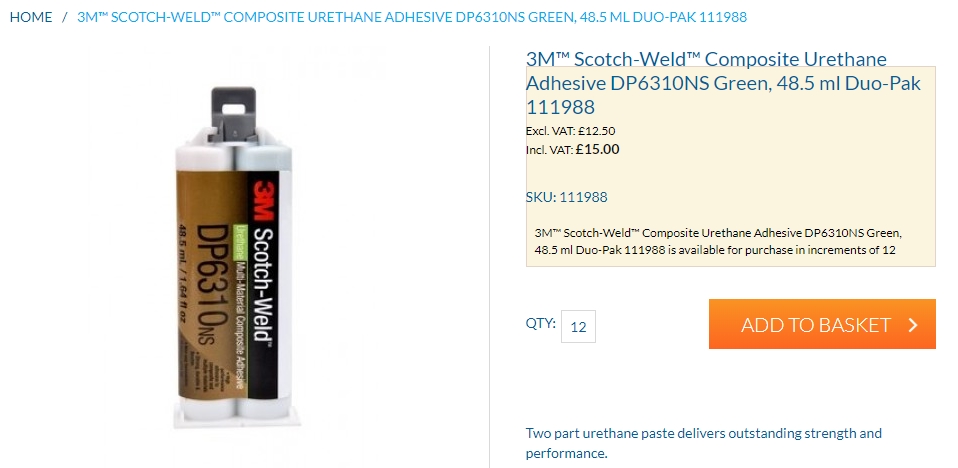Activity Feed › Forums › Sign Making Discussions › General Sign Topics › push-on fixings and alumin composite (dibond)
-
push-on fixings and alumin composite (dibond)
Posted by Simon C O'Reilly on December 9, 2019 at 3:57 pmHi Folks,
I would like to get a second opinion on this if possible.
I’m fixing large (1m x 1m) flat dibond letters to a ribbed cladding on a building. I’m planning to use (plenty of) push-on fixings, however I’m trying to figure out the best glue to use between the fixing and panel. I will key the back of the dibond first, but not sure exactly which glue to use.
Any thoughts appreciated
Iain Pearson replied 4 years, 4 months ago 8 Members · 14 Replies -
14 Replies
-
Hi Simon,
I use Penloc 1:1.
It comes with a mixing nozzle but I don’t use it.
I just mix it with a nail on a scrap piece of alloy composite and apply to the mail locator.Never had a problem with this solution.
Best of luck and….Happy Christmas to you all!
-
Thanks for that Philip, it seems to be 2 part resin then? I will have a look out for this brand
-
My pleasure Simon, I’m in Co.Down, where are you based?
-
Thanks Philip,
we’re in lovely Kildare. We were up the Mourne mountains last year for a hike. Beautiful spot!
-
Well I had a great time on a narrowboat on your river Barrow last spring!!
Me and my mate has a slow pub crawl over 4 days.
I’ll certainly be back to Kildare….. -
Hi Iain,
They will be going approx 10 metres high fixed to ribbed cladding
-
To be honest Simon, at that height I think I would be riveting to the cladding – quicker and safer.
Is that an option ? -
Agree with Iain… a good gust of wind on something that size it might pop off.
Does it need to stand off?
-
Agree also, nylon locators perish and get brittle……
If it has to stand off – 10mm foamex strip spacers screwed to cladding with letters then screwed to that???
-
Stand off locators would keep me awake at night when the wind picks up to be honest. 10 metres up & a light breeze becomes a hurricane & nobody would see a gap anyway. I would be using colour coded rivets & not having any sleepless nights. Just my opinion
-
I’ve tried this around 6 years ago, exactly the same scenario except it was acrylic & standoffs on a ribbed factory. Over the years i think 2 or 3 letters came off with the wind. Couple of months ago client called suggesting all letters don’t look safe anymore.
These have now be re-done with coloured composite letters now with colour coded screws into the building.
I’ve not looked at the letters close up, but from a distance (which is how they are always viewed) they don’t look any different to how they did before!
-
If fixing locators to composite, we use a 3M two-part adhesive which is applied using a small hand held gun dispenser.
I forget the name, but just done a quick google and i think this is the one we use. ill check and correct this post if i am wrong but think it is.(i am actually out of this stuff, so this post has reminded me to get more!) :smiles:
anyway, when applying this to composite, make sure you cross score the surface where the locator will sit.
then clean with ispropynol or meths.
Then apply a blob and sit the locator on it. do not push the locator flat to the base. let it sit a mil on the surface so it has a grip from the underside and around the edge. its on weight will allow it to settle nice and level.make sure its allowed to dry on a level surface or they will slide, and it doesn’t take much of a gradient for that to happen.
if you need it to cure quicker, wave a heat gun cross it repeatedly and you will see the surface cure and change to a brown. but be careful not to over heat!
also, if using a cheap brand of composite, do a test first and look at it outside in the daylight. rocking the composite side to side to see if you can see a ghosting or dimple in the face of the composite.
This is because cheap brands of composite can react to the heat generated by two part adhesives which get very hot when mixed and curing.That said, i tend to agree if something is high enough. is large and reliant on the fixing long term. i would prefer to use the likes of a colour headed rivet or tech screw.
-
This is the stuff we use for low level stuff, we get our locators from them too
https://snapfix.com/collections/feature … 5968374215
Hope it helps
Log in to reply.



